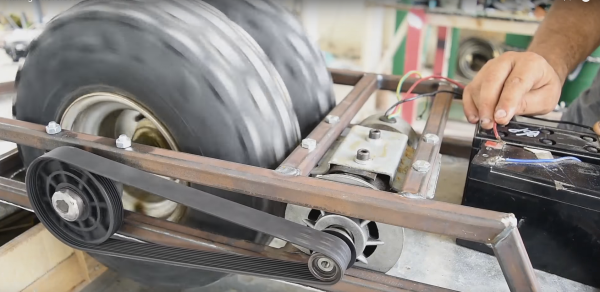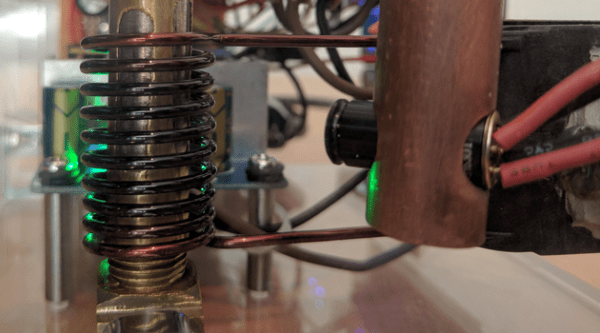If you’re anything like us, chances are pretty good you’ve got at least one underused piece of fitness gear cluttering up your place. Rather than admit defeat on that New Year’s Resolution purchase, why not harvest the guts and build an all-terrain hoverboard for a little outdoor fun?
The fitness machine in question for [MakeItExtreme]’s build was a discarded Crazy Fit vibration platform. We’re not sure we see the fitness benefits of the original machine, but there’s no doubt it yielded plenty of goodies. The motor and drive belt look stout, and the control board eventually made it into the hoverboard too. The custom steel frame was fabricated using some of [MakeItExtreme]’s DIY tools, which is what we’re used to seeing them build — check out their sand blaster and spot welder for examples. A couple of knobby tires in the center of the board let the rider balance (there’s no gyro in this version) and power is provided by a couple of 12 volt AGM batteries. Sadly, the motor was a line voltage unit, so an inverter was needed. But it was the only part that had to be purchased, making this a pretty complete junk pile build.
See the video after the break for build details and a few test rides. Looks like it can do 20 mph or so – pretty impressive.


















